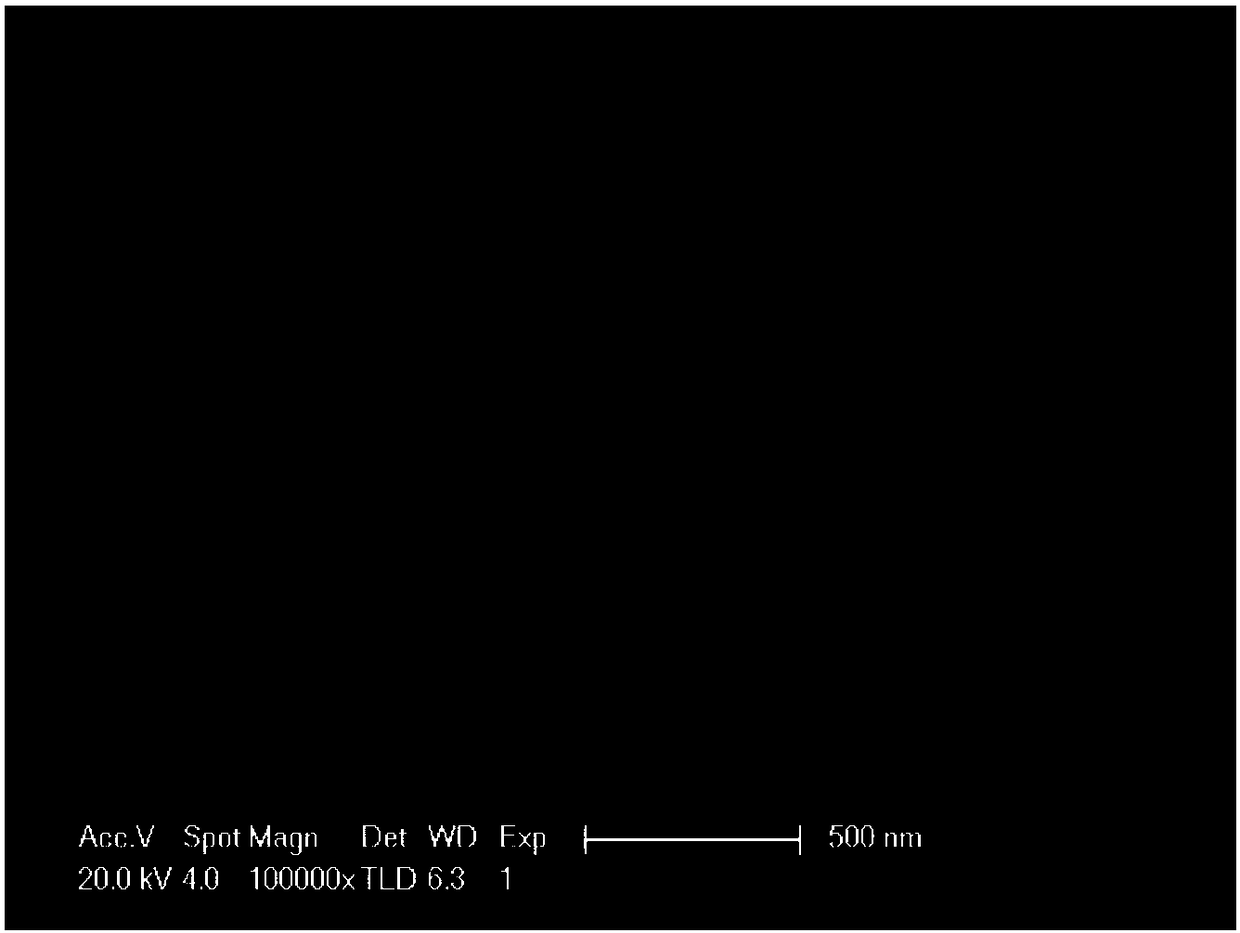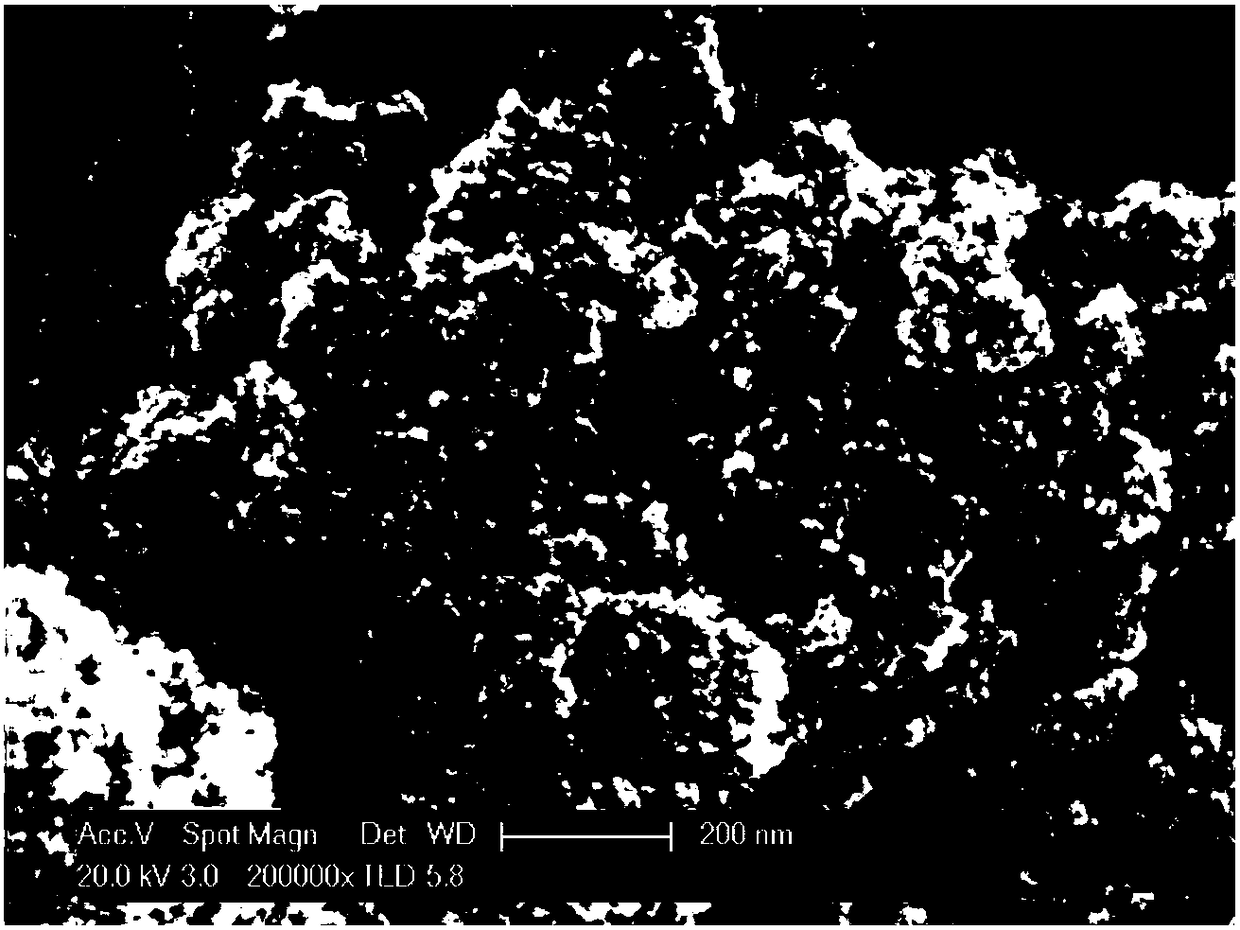Method for preparing nano YAG (yttrium aluminum garnet) fluorescent powder
A yttrium aluminum garnet and phosphor technology, which is applied in nano-optics, nano-technology, nano-technology, etc., can solve the problems of coarse phosphor particles, uneven distribution of encapsulated phosphor particles, and high synthesis temperature, so as to solve the problems of agglomeration and The effect of sintering problems, ease of mass production, and simple preparation methods
- Summary
- Abstract
- Description
- Claims
- Application Information
AI Technical Summary
Problems solved by technology
Method used
Image
Examples
Embodiment 1
[0039]Example 1: Prepare 2 L of potassium sulfate solution with a concentration of 0.1 mol / L with deionized water, add polyacrylic acid with 5% salt weight, and dissolve it. Under the condition of stirring, drop the potassium sulfate solution containing polyacrylic acid into 50 liters of ethanol, wash the precipitate with ethanol for 1-2 times, and obtain nanometer potassium sulfate after drying. Weigh 20 grams of nano-potassium sulfate, disperse it in 200 ml of ethanol, add 0.5 grams of stearic acid, and keep stirring at 50° C. for 2 hours. After centrifuging the nano-potassium sulfate ethanol dispersion, disperse the nano-potassium sulfate in 200ml of xylene, add 10g of YAG carbonate precursor, stir at 80°C for 2 hours, centrifuge, dry, and calcinate at 1000°C for 2 hours, then at 800°C Calcined in a reducing atmosphere at 100°C for 2 hours, washed with water and dried to obtain nanometer YAG fluorescent powder.
Embodiment 2
[0040] Example 2: Prepare 2 L of potassium sulfate solution with a concentration of 0.1 mol / L with deionized water, add polyacrylic acid with 5% salt weight, and dissolve it. Under the condition of stirring, drop the potassium sulfate solution containing polyacrylic acid into 50 liters of ethanol, wash the precipitate with ethanol for 1-2 times, and obtain nanometer potassium sulfate after drying. Weigh 0.2 g of nano-potassium sulfate, disperse it in 200 ml of ethanol, add 0.02 g of stearic acid, and keep stirring at 50° C. for 2 hours. After centrifuging the nano potassium sulfate ethanol dispersion, disperse the nano potassium sulfate in 200ml xylene, add 0.1g YAG carbonate precursor, stir at 80°C for 2 hours, centrifuge, dry, calcinate at 1000°C for 2 hours, and then Calcined in a reducing atmosphere at 800 degrees Celsius for 2 hours, washed with water, and dried to obtain nanometer YAG fluorescent powder.
Embodiment 3
[0041] Example 3: Prepare 2 L of potassium sulfate solution with a concentration of 0.1 mol / L with deionized water, add polyacrylic acid with 5% salt weight, and dissolve it. Under the condition of stirring, drop the potassium sulfate solution containing polyacrylic acid into 50 liters of ethanol, wash the precipitate with ethanol for 1-2 times, and obtain nanometer potassium sulfate after drying. Weigh 10 grams of nano-potassium sulfate, disperse it in 200 ml of ethanol, add 0.5 grams of stearic acid, and keep stirring at 50° C. for 2 hours. After centrifuging the nano potassium sulfate ethanol dispersion, disperse the nano potassium sulfate in 200ml xylene, add 5g of YAG carbonate precursor, stir at 80°C for 2 hours, centrifuge, dry, calcinate at 1000°C for 2 hours, and then at 800°C Calcined in a reducing atmosphere at 100°C for 2 hours, washed with water and dried to obtain nanometer YAG fluorescent powder.
PUM
 Login to View More
Login to View More Abstract
Description
Claims
Application Information
 Login to View More
Login to View More - R&D
- Intellectual Property
- Life Sciences
- Materials
- Tech Scout
- Unparalleled Data Quality
- Higher Quality Content
- 60% Fewer Hallucinations
Browse by: Latest US Patents, China's latest patents, Technical Efficacy Thesaurus, Application Domain, Technology Topic, Popular Technical Reports.
© 2025 PatSnap. All rights reserved.Legal|Privacy policy|Modern Slavery Act Transparency Statement|Sitemap|About US| Contact US: help@patsnap.com


